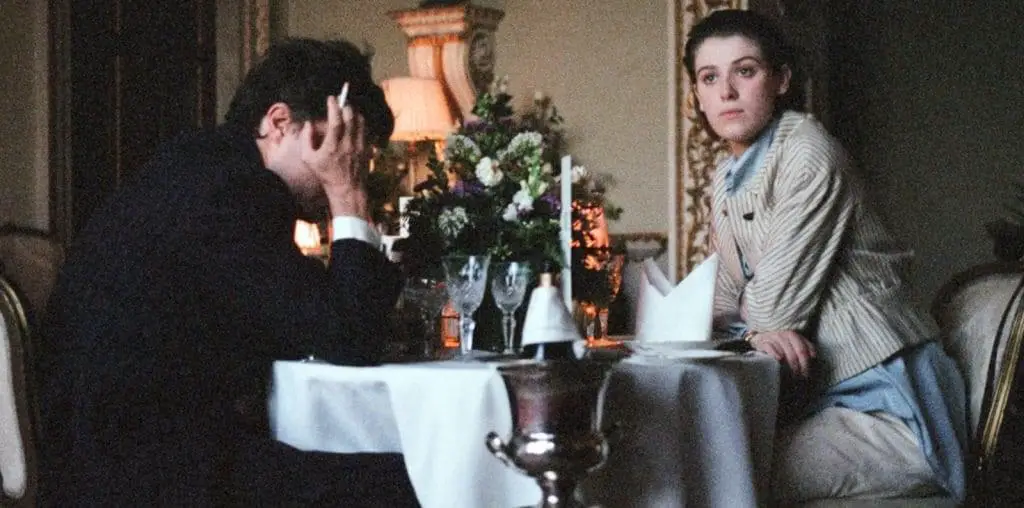
The makers of the new “Book of Shadows: Blair Witch 2” did not have an easy task on their hands. So many movies with titles ending in numbers are so completely unwatchable. What does it really take to make a good sequel? Aside from the requirements of just producing a good movie, it depends on how the filmmakers answer four simple questions.
[ 1.What made the original unique? ] ^ This is where project usually go wrong, especially when executed by different creative teams. Filmmakers not involved in the original work may not figure it out, and too often are too eager to put their own personal stamp on what is now THEIR movie. “Exorcist II: The Heretic” is probably the best/worst example of this failure. It’s hard to discern if director John Boorman had even seen the first film.
If a movie revolves around a specific gimmick, there’s the problem of how many films can that gimmick really support. The “Die Hard in a…” concept could not only support a sequel, but at least a dozen rip-offs as well. “Scream” was good for just a single extra installment, but they went ahead and made a second sequel anyway.
Let’s look at the “Alien” series. What are the essential elements of the first Ridley Scott film? One is the look; a lived-in, believable science-fiction setting and the truly alien appearance of the alien itself. The other element is the transition of a haunted house story into the then novel sci-fi context.
[ 2. In what does the audience already have an emotional investment? ] ^ This usually comes down to characters. The biggest problem to be encountered here is when actors don’t want to come back for more. “Exorcist III: Legion” had only one actor return in the same role as the first film, and with a different story, it’s hard to even identify it as a sequel. “Die Hard With a Vengeance” actually dumps the often used gimmick of the first film as well as the main character’s wife but was still a success based on the return of Bruce Willis and the other strengths of the film.
[ 3. How do you address the elements found in the first two questions? ] ^ One you know the key elements of the original, it’s not always necessary to repeat them. When Jim Cameron wrote and directed “Aliens”, he kept much of the look. However, instead of the haunted house tale of the first, he instead crafted a war/siege story to tell within this futuristic setting. The result is true to its predecessor while providing much more in the way of novel elements that just a larger quantity of aliens.
While “Aliens” was quite successfully both artistically and commercially, the third film of the series was neither. Though artfully directed by David Fincher, “Alien 3” was a mess. It seemed to be going for some sort of prison movie vibe, but it wasn’t coming through too clear. The biggest failure of the film occurred during the opening credits with the deaths of most of the previous installment’s surviving characters. The audience had an invested itself emotionally in the rescue of these characters in “Aliens” and then suddenly, all the previous effort and good will was erased.
[ 4. How will build upon the previous films? ] ^ Once a film establishes a universe, the audience usually wants the filmmakers to explore more of it in later films. You have to know what’s appropriate. The “Bigger! Harder! Faster!” approach doesn’t always mean better. Science-fiction has an easier mandate as they involve more literal world-building and embellishing. For something like the “Star Wars” franchise, you want to see more planets and aliens. The “Terminator” sequel chose the option of a good version of the original cyborg and a whole new robot to act as the new villain.
Horror films are more elusive. Much of the appeal of the great ones derives from an air of mystery or details left unexplained to the audience. The biggest mistake made by sequels is an attempt to explain the unexplainable. The usual result, as in “Exorcist II: The Heretic”, is to disappoint the audience. Horror explained usually results only in absurdity.
The makers of “Book of Shadows: Blair Witch 2” have done well in that they don’t attempt to explain the first film or create an elaborate history for an actual Blair Witch. Director Joe Berlinger seems to have correctly identified what was special about the original and he tried to be creative in how to address those elements. The only problem left was that, given the time allowed, was he able to make a good film? Well, he tried.
Check out FILMTHREAT.com’s FEATURE ARCHIVES and read more insightful stories, expert analysis, gut-busting satire and caustic commentary!

